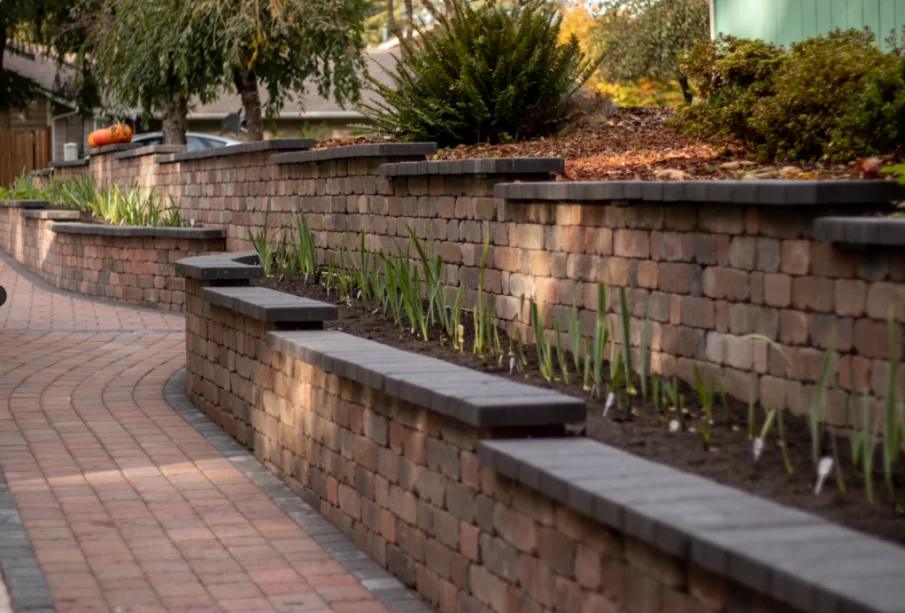How to Maintain and Care for Your Retaining Wall

Retaining walls are a vital part of many landscaping projects. Whether they are used to define boundaries, hold back soil, or create level surfaces on sloping landscapes, retaining walls serve important functions in the overall design of outdoor spaces. To ensure that your retaining wall continues to perform its duties effectively and maintains its aesthetic appeal, proper care and maintenance are essential. In this post, we will discuss some practical tips on maintaining and caring for your retaining wall.
1. Regular Inspections:
Regular inspection of your retaining wall in Craigieburn is crucial for identifying any signs of damage or wear and tear. Start by examining the base of the wall for any signs of settlement or shifting. Look out for cracks, bulging sections, or loose stones. These could indicate that the wall is under stress and may need immediate attention.
2. Patch up Cracks Promptly:
If you notice any cracks in your retaining wall during your inspection, it’s important to address them promptly. Cracks can allow water seepage into the structure, weakening it further. To fix smaller cracks, start by removing any debris using a wire brush or pressure washer. Then, fill the crack with an appropriate concrete patching compound following the manufacturer’s instructions. It may be best to consult a professional for larger cracks or those located near drainage pipes.
3. Control Water Flow:
Water management plays a key role in maintaining the structural integrity of a retaining wall. Poor drainage can result in hydrostatic pressure buildup behind the wall, leading to instability. An effective way to control water flow is by incorporating drainage features into your retaining wall design. This can include drain pipes installed behind the wall or weep holes at regular intervals along its length. Regularly check these drainage features and ensure they are clear from obstructions like soil or vegetation to avoid water backup and potential damage.
4. Install Proper Backfill Material:
The material behind your retaining wall—backfill—is crucial in providing support and stability. It’s essential to use the right type of backfill material based on your project requirements and soil conditions. Selecting lightweight, well-draining fill such as gravel or crushed stone can help prevent excess lateral pressure on the wall. Additionally, using geotextile fabric between the backfill and soil can provide extra reinforcement by avoiding soil migration into the fill material.
5. Address Vegetation:
Vegetation growing along or near your retaining wall can cause damage over time if left unchecked. Plant roots can penetrate through small cracks in the structure, leading to further deterioration. Regularly trim any vegetation growing adjacent to your retaining wall. This will enhance its appearance and prevent roots from encroaching on its integrity. Additionally, monitor for weeds that may take root within any drainage features, such as weep holes or behind drain pipes. Remove them promptly to ensure proper water flow and prevent potential blockages.
6. Pressure Washing:
Over time, dirt, moss, algae, and other stains can accumulate on the face of your retaining wall, affecting its overall appeal. Regularly pressure washing your retaining wall will help restore its original clean look while keeping it free from potentially damaging substances like organic matter. Take care not to use excessive pressure when cleaning, as this could damage the surface of some materials like brick or concrete. Always follow manufacturer guidelines regarding pressure settings and nozzle distance for optimal results.
7. Guard Against Freezing:
Protecting your retaining wall from freezing temperatures is especially important if you live in an area with cold climate winters. Freeze-thaw cycles can cause significant damage to structures made of certain materials like concrete or natural stone. Applying a water-repellent sealant compatible with your retaining wall’s surface material can help minimise water absorption and reduce the risk of freeze-thaw damage. Consult with a professional about choosing an appropriate sealant for your specific wall.
Conclusion
Maintaining and caring for your retaining wall is critical to its long-term stability and aesthetics. By following regular inspection routines, addressing any issues promptly, managing water flow effectively, controlling vegetation growth, cleaning as needed, and protecting against freezing temperatures, you can ensure that your retaining wall remains strong and visually appealing for years to come.







